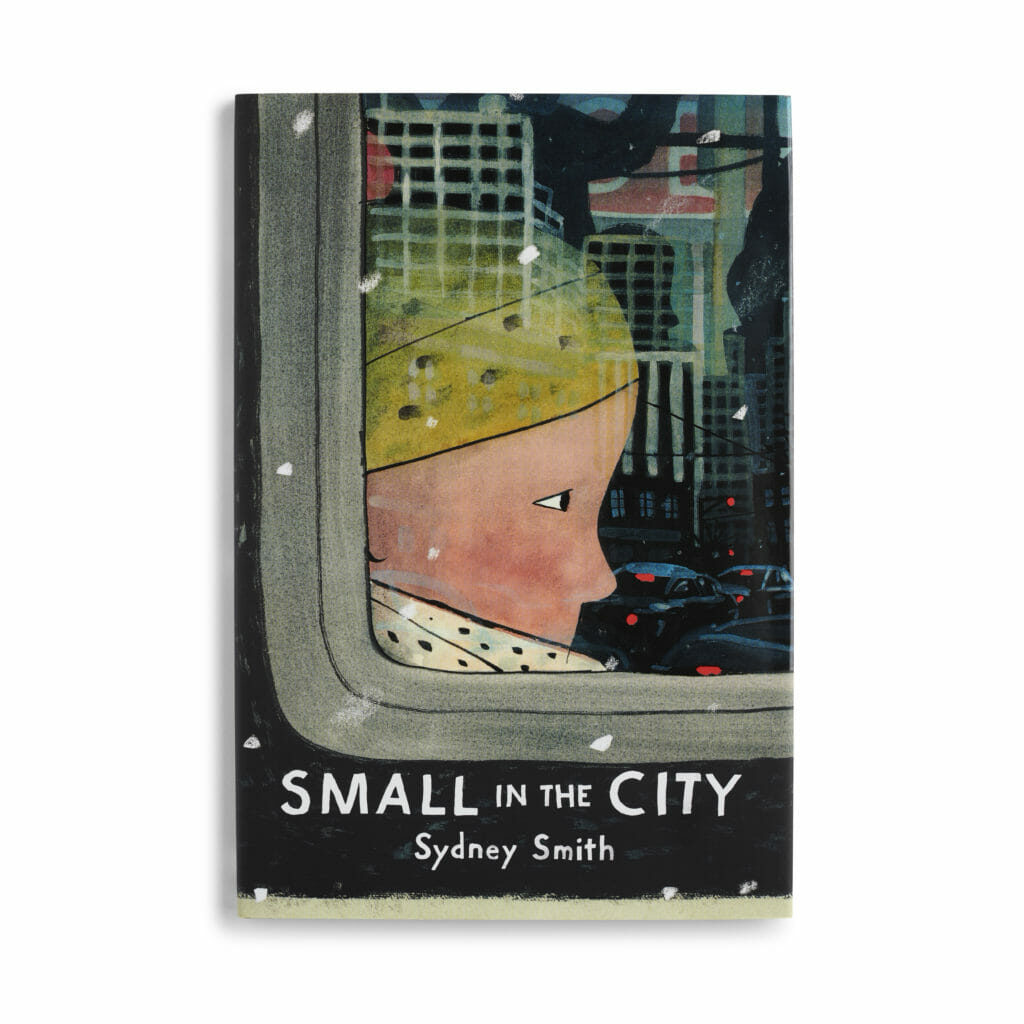
Q&A: author and illustrator Sydney Smith
The Halifax-based artist recently won his second Governor General’s Literary Award
Sydney Smith thinks children’s books should tackle complicated emotions.
The Halifax-based artist has illustrated numerous children’s books, including the wordless picture book Sidewalk Flowers, which he made with JonArno Lawson. The book won a 2015 Governor General’s Literary Award for best children’s illustrated book.
The Dalhousie Gazette spoke with Smith about his latest release, Small in the City, the first book Smith both wrote and illustrated. The book is about a young boy navigating the busy streets of Toronto. Small in the City recently earned Smith another Governor General’s Literary Award.

What prompted you to write the story in the first place?
I’ve always wanted to write as well as illustrate, but illustrating came easier to me.
I went to art school here in Halifax, and I’ve always identified myself as an artist, so writing was always something that I was scared of doing and scared of showing anybody. But over the years of working on other people’s texts, you become more aware.
Although I wasn’t putting together full manuscripts, I was becoming more aware of the way I wanted to write for people. I don’t mean this in a bad way, but it was mostly by not seeing what I wanted to see in other people’s writing in other people’s books was really what inspired me to write.
What was it that you weren’t seeing in literature that you wanted to put out into the world?
Well, it’s not fair to say that I wasn’t seeing it. I wanted to see my take on it. It was like, I wanted to see a story that really respected and acknowledged the capacity for complicated and mature feelings and emotions [in children].
As you grow up, you develop these abilities to compartmentalize and label things, simplify things, and it’s all coping mechanisms.
As a kid, there aren’t as many tools. There aren’t as many ways to identify, “oh, this is a feeling that happens when I’ve lost a friend, or this is a feeling that happens when I need someone but I’m alone.” Basically, what I’m trying to say is that picture books can be a safe place that are either scary, or sad, or maybe feelings that have no real terminology or real label.
What do you think Small in the City has to say to both adults and kids about the nature of fear?
The thing is that the character navigates a city that is very familiar because it’s their neighbourhood. So, if there’s any fear, it’s the fear of losing someone. It was almost intentional to not show that the child has fear.
The city is huge. But the tone of the text, the intention was that it would be very confident, because the child is acting like a mentor to someone smaller than them, and so with that confident tone, they are trying to pass on this knowledge that someone else might need.
Fear is a very powerful thing in picture books because it’s a safe place. Many of the books that I had as a kid that I return to are the ones that I was afraid to look at, and mostly it was because it wasn’t just scary pictures. It was writing and images that provoked something in me that I didn’t really recognize, and I would feel uncomfortable. But I would go back to them, to the feeling of being uncomfortable.
There was one when I was younger where there was an image of an African safari and there was a lion eating a zebra. I remember always going back to this and looking at it. There was something really intimate about it because the lions were almost inside of the belly of the hollowed-out zebra, and it made me uncomfortable. But that book was a place to go and kind of explore that feeling without it having any real-world consequences.
I think that goes with something I was getting at with [Small in the City]. The feeling of loss creeps up on you. You don’t really expect it at first.
I’m hoping that this book provides a place where people can feel that feeling, explore that feeling and try to empathize with the character who is not necessarily saying, “I’m sad,” or “don’t do this.” It’s more so what they’re not saying.
So much of the vibe of Small in the City’s setting was Toronto. To what extent do you think your familiarity with the streets of Halifax came through?
It’s set in Toronto and in the neighbourhood I was living in at the time, on Sherbourne and Gerrard. So it’s very close to Young and Dundas which is ground-zero of chaos.
[My wife and I] were not in a very pleasant neighbourhood. It was always busy and always people yelling on the streets at night. So many sirens that you don’t even hear them anymore. But it was a place that we were living in, with our son, and we would walk down the streets and it was just something to notice that it was his home. It was his neighbourhood.
You don’t see many stories that are set in such neighbourhoods. It’s not the main point of the story, but it is an element — that it’s not the friendliest neighbourhood.
What would you say to anyone who’s reading this who might be interested in picking up your book?
I normally don’t tell people anything because I don’t want to give anything away! I don’t really want to tell them how the story goes or what it’s about.
That first reading is something you can’t get back. Especially because there is a bit of a twist, which I’ve realized, since it’s been released, it gives reviewers a hard time.
When I write, the angle that I try to go at is to not really write for kids, but to have them included in the age-range that could read the books. So, the story is really just for me, and I write it in a way that kids can be involved as well.
Saying you’re writing for kids can get you into really limiting and condescending territory where you’re telling them what they’re feeling, what their life is like, when really, the easiest thing to do is to talk to people about the human experience.
Editor’s note: This interview has been edited for length, clarity and style.






